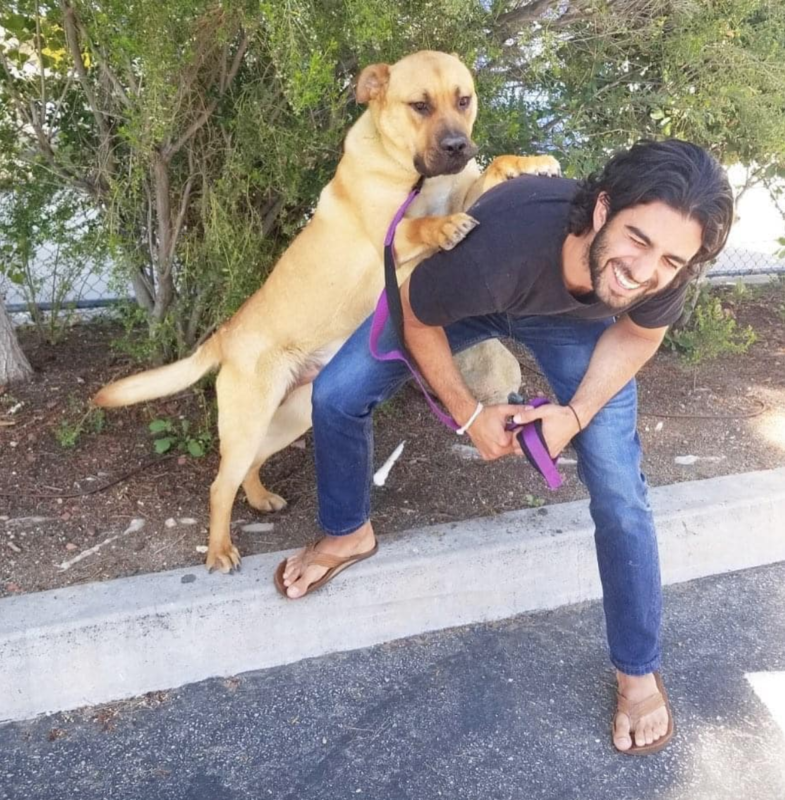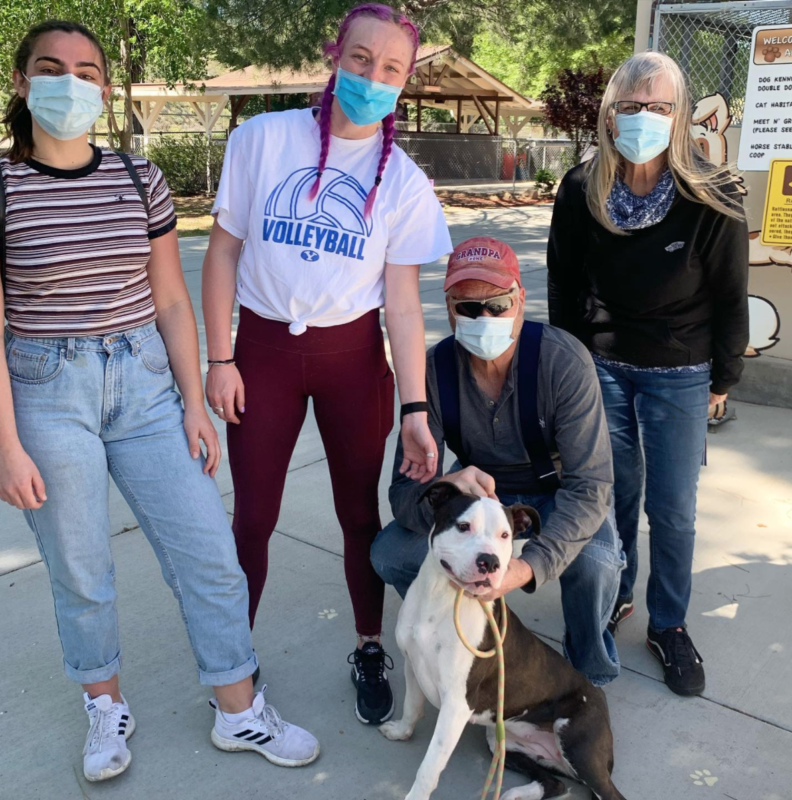Iman Solmonpoor had been thinking of adopting a dog before the coronavirus pandemic, and says the stay-at-home directive gave him the perfect opportunity.
“I was looking at adopting a dog about seven months ago, and it just didn’t work out because of my work obligations,” Solmonpoor said.
While he only lives 10 minutes away from the office, his full-time job would make it difficult to care for a new pup, “especially during that beginning phase where you have to train the dog, as well,” he said.
For him to adopt a pup, he knew he’d need enough time to focus on the new addition.
“That was the No. 1 thing for me,” Solmonpoor said. “And that was obviously gone because, now more than ever, we’re spending the most time at home — so I have more than enough time.”
It didn’t take long for Solmonpoor to make the decision to restart his search, and quickly fell in love with Bear, a 1-year-old German shepherd mix that was available for adoption at the Castaic Animal Care Center.

“He’s been adjusting really well,” he added. “He’s such a great dog. I got very lucky.”
Like Solmonpoor, a number of people have decided to take the plunge, adopting a furry friend of their own while working from home.
Terra Dispirito, a volunteer at the Castaic Animal Care Center, says adoption rates at the center have increased during the quarantine, and while volunteers are still volunteering, they are only doing so one at a time and abiding by the public health guidelines.
While the same goes for The Brittany Foundation Animal Sanctuary, a no-kill shelter in Agua Dulce, which is a good thing, according to founder Nancy Anderson, she believes there are steps new pet owners need to take to ensure those animals don’t return to the shelter.
“That’s not fair to the family and the dog,” she said.
Here are some tips and tricks to remember in order to make the transition easier for your new, four-legged friends:

Meet the candidates
Though social media has made it easier to fall in love with an animal without ever even meeting them, it’s important to make sure that connection translates when face to face, Dispirito said.
Setting up a meet and greet at the shelter can allow you to get a feel for the animal, while also giving it time to show you its personality, Dispirito added.
She suggests bringing in every member of your household for the meet and greet, including any other animals you may already have to ensure they’ll get along when at home.

Sit, stay, repeat
As the state and county begin to ease the stay-at-home restrictions, it’s important to remember how these new family members will adjust when the time comes for you to get back to your normal routine.
Solmonpoor spent his first three weeks at home with Bear training him, anticipating a time when he’d have to return to the office.
“The first day or two I had him in a crate, he’d cry for about five minutes,” he said. “He learns so quickly. Now that he knows I’m always going to come back to him (and that) he’s not going to be in this crate forever, he just relaxes … It’s like his own little den. It’s adorable.”
Anderson recommends training start within the first couple of weeks of bringing your new animal home, while Dispirito added, “Give the dog some time, contact a trainer if you need help and just have patience.”

Give them time to adjust
That being said, both Dispirito and Anderson agree that giving the animal time to adjust should be your top priority.
“You don’t just bring an animal home and the animal fits in your household,” Dispirito said, adding that it typically takes an animal two to four weeks minimum to decompress and adjust to their new surroundings. “It’s a shock going into a new home, and the animal needs to get used to (the idea) that these people are never going to leave me.”
Anderson agreed, adding, “It’s almost too overwhelming sometimes for an animal to be introduced from, say a kennel at a shelter into a big home … It takes awhile for the animal to get familiar with the home and all the stuff that’s going on there.”
Anderson suggests keeping doors shut so they can’t wander too far, slowly introducing them to a new area as they become more comfortable.
And, if your household has children, be sure to give the animal time to get used to being around them before allowing them to play with the animal, Dispirito added.

Set a routine
Setting a routine for the animal can also help ensure they are prepared for that moment where you won’t have to be stuck at home 24/7.
“The dog will get used to a routine, so when people do go back (to work), they need to start slowly getting the dog used to them not being there,” Anderson said.
She suggests starting by leaving them alone for a couple of hours, then working up to longer stints, which can help to housebreak them from having accidents indoors as well.
“You’ve got to get the animal used to the new routine over time,” she added.
Still, Dispirito says pet owners should be prepared for some accidents, even if the animal is potty trained, as they’re sure to be nervous in their new environment.

Animal-proof the house
Before leaving your animal unsupervised, it’s also important to do a walk around, identifying things around the house that they could eat, as well as ways they could escape, when left alone, Anderson said.
This includes ensuring fences are high enough if a dog has access to the backyard while you’re away or putting anything poisonous away securely.

Get them some toys
Doing so can not only keep your new animal occupied, but also help make them feel comfortable in their new surroundings.
Toys, like the deer antler Solmonpoor chose to get for Bear, can give them a distraction to chew on for hours.













